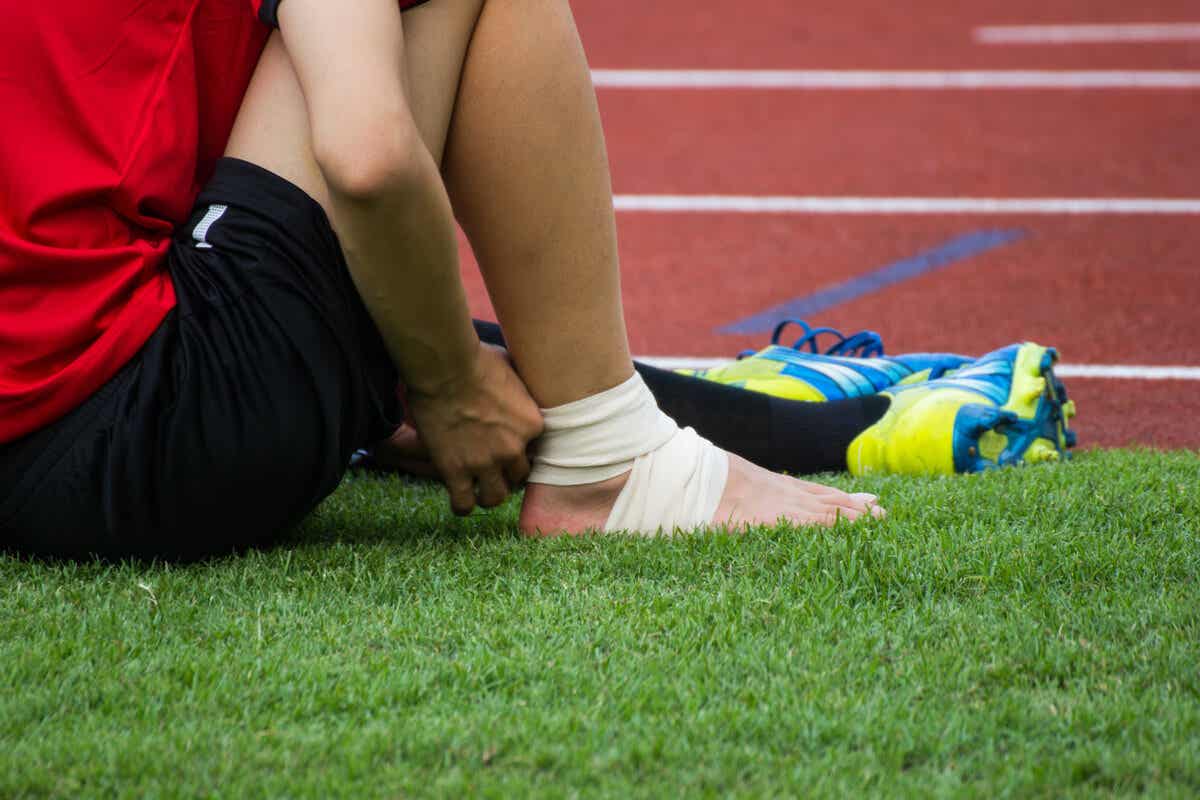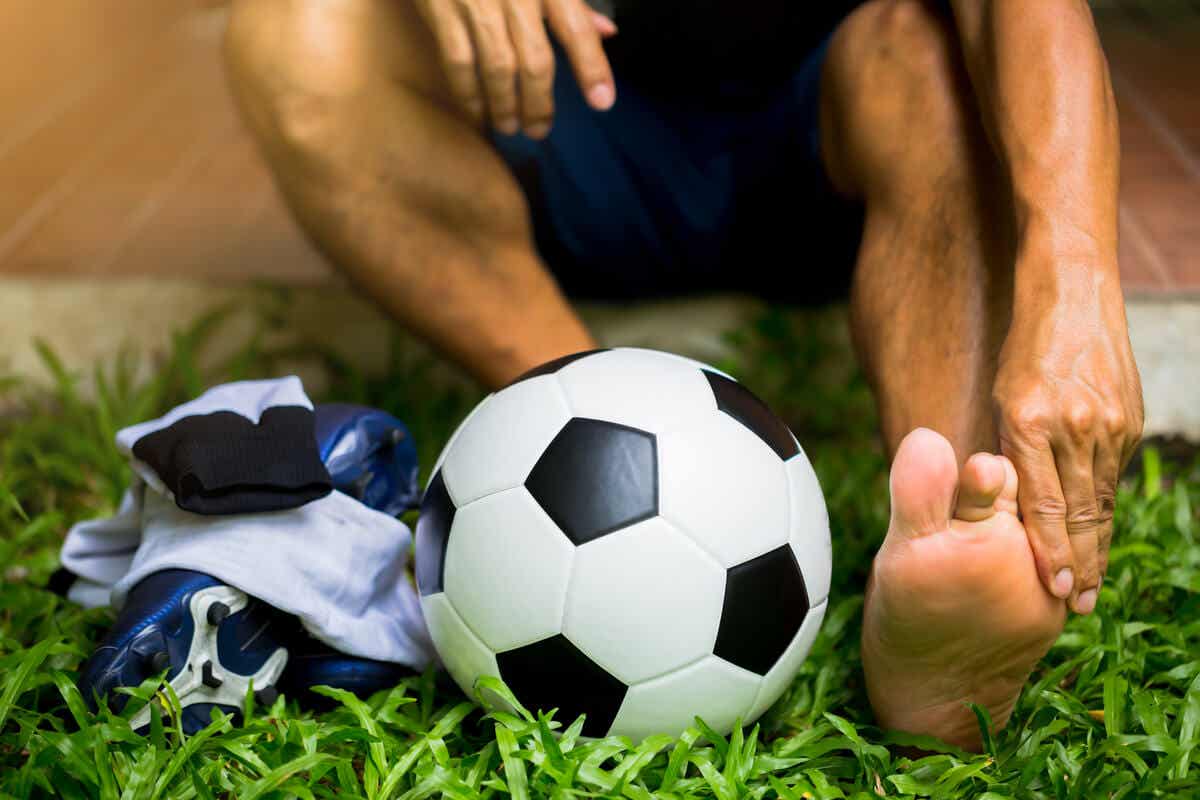Injuries Cristiano Ronaldo has Suffered

To talk about CR7 is to refer to an athlete who understands the demands of elite soccer and has adapted his habits to enhance sustained performance. Despite this, the Funchal-born player has faced physical problems that have hindered his continuity at specific moments. Today, we’ll talk about the worst injuries that Cristiano Ronaldo has suffered.
Cristiano Ronaldo’s career so far marks a passage through the youth teams of Nacional, Sporting Lisbon, Manchester United, Real Madrid, and Juventus. So far, the left-winger has accumulated 26 physical problems, of which only 6 merited an absence of more than 14 days.
Let’s take a closer look at each one of them.
The worst injuries suffered by Cristiano Ronaldo
We’ll take a chronological tour of the worst injuries that Cristiano Ronaldo has suffered in his career so far. We’ll take a closer look at the recovery time, the matches lost, and the severity of the physical affectation.
Let’s get started!
1. Ruptured ankle ligament
Cristiano Ronaldo’s first bad news in professional soccer took place in 2008 when he was playing for Manchester United under the technical direction of the great Alex Ferguson. It was a rupture of the ligament in his right ankle that generated a lot of uncertainty about his recovery.
However, the Dutch surgeon Niek van Dijk repaired the damage. Thus, the Portuguese attacker faced a recovery of 94 days, which represented the loss of 11 official matches.

2. Bone edema in the ankle
In 2009, when playing for Real Madrid, the ghosts of the right ankle that seemed to have been buried at Old Trafford came back to haunt Ronaldo.
This time, there was a bone edema (accumulation of inflammatory fluid in the bone) on the side of the right ankle, the result of a sweep by Souleymane Diawara in a Champions League match against Olympique de Marseille.
Although the doctors of the Merengue club were responsible for the treatment, Cristiano Ronaldo also underwent a consultation with Niek van Dijk, who had treated him a year ago with the Red Devils. In short, he was out of action for 42 days and 9 matches.
3. Biceps fiber rupture
In April 2014, during the 2013-14 campaign, he ruptured fibers in his left femoral biceps 10 minutes before the end of a Champions League quarter-final against Borussia Dortmund.
He was out for 18 days, equivalent to 4 matches (including the final of the Copa del Rey and the Champions League semifinals), which were crucial for the destiny of the team led by Carlo Ancelotti from the bench.
Keep reading: The Causes of Biceps Tendinitis
4. Patellar Tendinitis
Another of Cristiano Ronaldo’s worst injuries was patellar tendonitis in the left leg. It also originated in 2014, four months after the fiber rupture in the biceps.
This inflammation of the microfibers of the knee tendon affected his performance in the Brazil 2014 World Cup, as he didn’t rest as doctors recommended at the time. In turn, at Real Madrid, the recovery time was 17 days – two official matches.
5. Knee ligament distortion
The next on our list of physical difficulties Ronaldo has endured took place in July 2016. We’re talking about a strain of the internal lateral ligament of the left knee. This happened after the inward tilt of the joint, which required disproportionate and abrupt stretching.
As a result, the top scorer in the history of Portugal and Real Madrid was forced to stop for 59 days (3 official matches with the white jersey).
6. Thigh injuries
While still with Juventus, the moment of suspense for the Vecchia Signora fans came while Cristiano Ronaldo was playing in a qualifying match for Euro 2020.
Thus, the flexors of his right thigh gave in during a match against Serbia, a scenario that forced the star to leave when 30 minutes of the first half had elapsed.
The injury happened in a bad pass from midfielder Rafa Silva, which Cristiano Ronaldo tried to rescue. However, the obligation to change direction in the run ended up taking its toll on the incombustible striker.
In this sense, the total number of recovery days was 14, while there were three games in which Juve didn’t have their star player.
7. Coronavirus-related sick leave
Finally, as an anecdotal case and in parallel to the worst injuries that Cristiano Ronaldo has suffered throughout his career as a professional footballer, we find his absence due to COVID-19.
This condition affected his performance in the 2020-21 season, resulting in a 16-day treatment and missing three Italian Serie A matches, in which Andrea Pirlo was unable to field him.

Cristiano Ronaldo’s injuries and lifestyle
Although the injuries that Cristiano Ronaldo has suffered show us that he isn’t a machine, he’s still in a place of honor. This makes sense if we analyze that since the 2003-04 season he hasn’t played less than 35 games per season. Furthermore, his average number of games played per season is 46.3.
All this is due to the healthy habits he has maintained for many years, including the following:
- Zero soft drinks. Water is his go-to beverage.
- Absence of red meat or frozen products in his diet.
- He prioritizes the intake of chicken and fish.
- Take takes 5 naps a day. Ronaldo divides the recommended 7-8 hours of sleep into 5 naps, each 90 minutes long.
We’ll see if Cristiano Ronaldo’s remaining career will end up with major injuries. In the meantime, statistics indicate that his retirement is still a long way away.
All cited sources were thoroughly reviewed by our team to ensure their quality, reliability, currency, and validity. The bibliography of this article was considered reliable and of academic or scientific accuracy.
- Bonilla U, Chavarría B y Grajales N. Tendinitis rotuliana (rodilla del saltador). Rev Med Cos Cen. 2016. Disponible en: https://www.medigraphic.com/cgi-bin/new/resumen.cgi?IDARTICULO=67661.
- Jensen I y Kramhøft M. Rotura distal del músculo bíceps femoral. Medicina y Ciencia en los Deportes. 1994. Disponible en: https://doi.org/10.1111/j.1600-0838.1994.tb00438.x.
- Correa J, Galván F, Muñoz E, López C, Clavijo M y Rodríguez A. Incidencia de lesiones osteomusculares en futbolistas profesionales. Revista Colombiana de Ortopedia y Traumatología. 2013. Disponible en: https://doi.org/10.1016/S0120-8845(13)70018-X.
- González J. Lesiones musculares y deporte. Rev Bras Med Esporte. 1998. Disponible en: http://www.scielo.br/scielo.php?script=sci_arttext&pid=S1517-86921998000200002&lng=en. https://doi.org/10.1590/S1517-86921998000200002.
- Cardero M. Lesiones musculares en el mundo del deporte. Revista de Ciencias del Deporte. 2008. Disponible en: http://e-balonmano.com/ojs/index.php/revista/article/view/24.
This text is provided for informational purposes only and does not replace consultation with a professional. If in doubt, consult your specialist.








